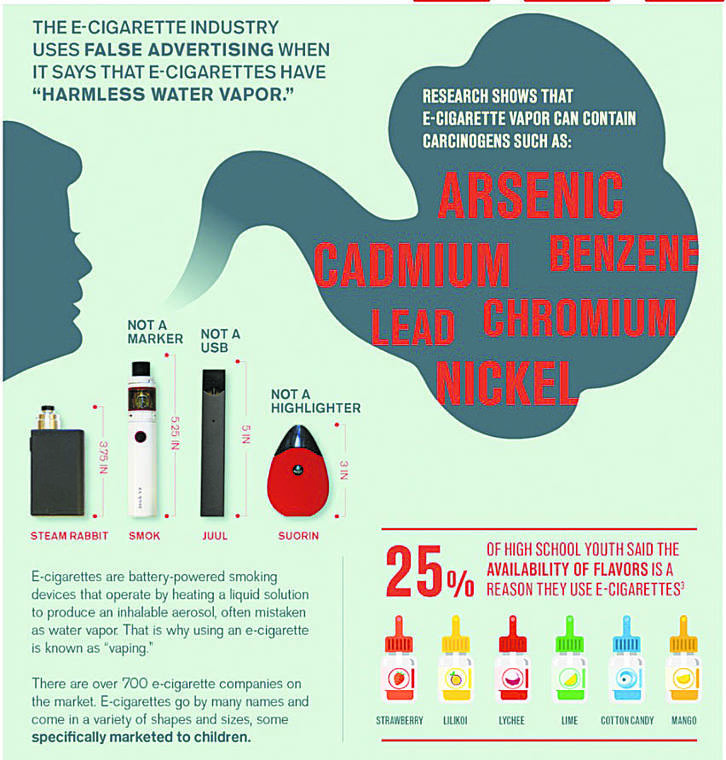With the vaping epidemic drawing in new users every day, Hawaii is embarking on another round of public health education modeled after its successful campaign to counter cigarette smoking.
That one has been underwritten by the Hawaii Tobacco Prevention and Control Trust Fund, established more than 20 years ago with Hawaii’s share of money from the Tobacco Master Settlement Agreement. That pact was struck between the nation’s four largest tobacco companies and states that sued to recover their tobacco-related health-care costs.
There may be more suits against the e-cigarette industry and even a future settlement there as well, but meanwhile the trust fund is already enabling programs aimed similarly to deter vaping. The state Department of Health is working with the Hawaii Community Foundation, which has administered the trust fund since 2000, on this.
A $1.2 million pilot grant to develop materials for a media campaign countering the vaping practice went to the Hawaii Public Health Institute and Searider Foundation. Its videos, made for and by youth, can be seen on 808NoVape.org Opens in a new tab, and ads are being disseminated through social and digital media, in malls and in schools.
HCF is wrapping up its request for proposals for grants to community-based nonprofits to launch further e-cigarette prevention programs. The application deadline is Tuesday. Information: www.hawaiicommunityfoundation.org/grants/open-applications Opens in a new tab.
Training for the state Department of Education started in April; and sessions for the Hawaii Association of Independent Schools and for the Public Charter School Commission are on the way. It is based on a toolkit developed by Stanford Medicine (http://med.stanford.edu/tobaccopreventiontoolkit/E-Cigs.html Opens in a new tab).
Lola Irvin of the Health Department’s Healthy Hawaii Initiative said the department released resources for educators and parents on HawaiiNoVape.com Opens in a new tab. All these efforts at outreach ramped up following a vaping summit held at Dole Cannery Pomaikai Ballroom a year ago, she said.
“We had teachers, principals, from the prosecutor’s office, deputy attorney general; people came from all of the counties,” Irvin said. “We had to turn people away.”

